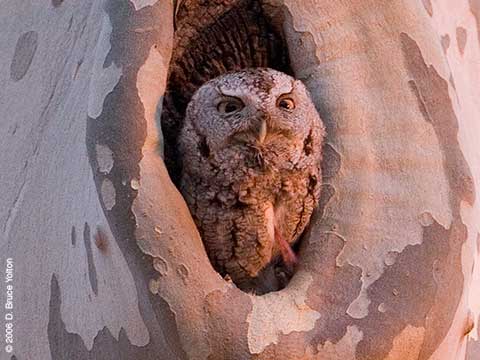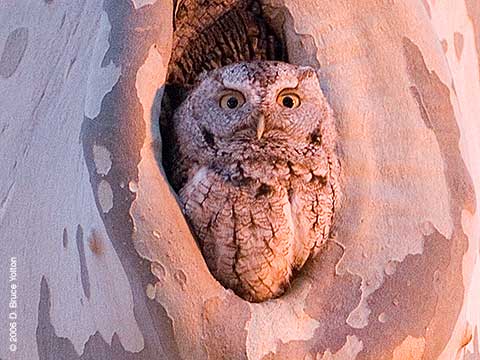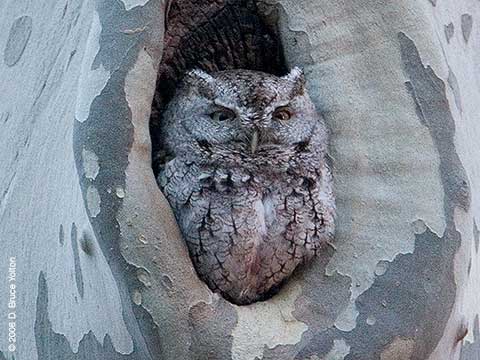After Work Birding In The Ramble
A spring migrant, a summer breeder and a year round-inhabitant…
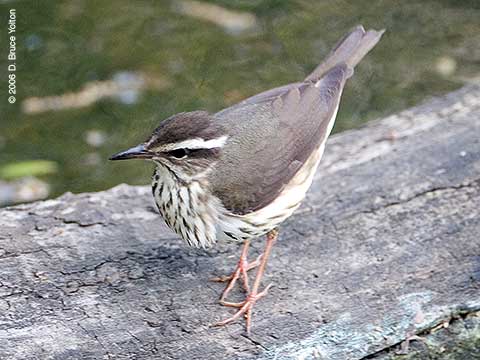
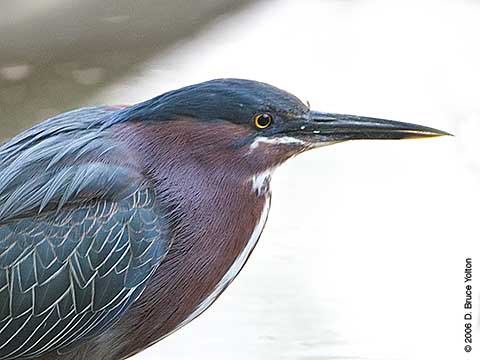
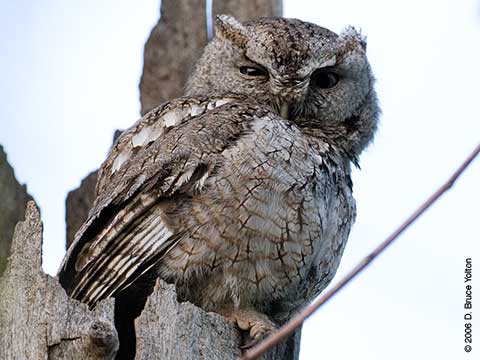
A spring migrant, a summer breeder and a year round-inhabitant…



I wasn’t able to make the Sunday fly out, but reports were that the owl flew out on schedule.
On Monday, there was no sign of an owl, just European Starlings hovering about the hole. We hope that this only means that the surviving adult Eastern Screech-Owl is now sleeping in tree branches now that the trees have leaves and the weather is warmer, and that nothing has happened to the owl.

On Tuesday, European Starlings were seen in the cavity early in the morning. By mid-day a dead owl hatchling was visible at the edge of the cavity. The park dispatched a “cherry picker”, and a second dead hatchling was discovered in the cavity. Both bodies were badly decomposed.
On Wednesday, a park employee found a third hatchling on the ground near the owls’ tree. I went to the tree and the surounding area in the evening to look one more time for our adult owl. It was nowhere to be found, which may be good news not bad.
So, a winter season of Eastern Screech-Owl watching ends with sad
results in the southern portion of the park. The season started with four
adults, two in the Ramble and two along the West Drive. It ended with
only one adult and a death toll of three adults and three hatchlings.
I was only able to watch the fly out on two nights this week, Monday and Tuesday.
On Monday, it rained and there was no sign of the owl.
On Tuesday, there was a standard fly out and two brief stops before flying off to hunt for the evening.
Soon the owl will be leaving its cavity for the summer to spend the warmer months in tree branches. Last year they left around April 20th.
We also learned this week the fate of the Red morph Eastern Screech-Owl found dead last week. It has been attacked by another animal, possibly our West Drive owl. (The fate of the Red morph’s mate, who disappeared this winter while the Great Horned Owl was around is still a mystery. Many suspect that he was attacked by the Great Horned Owl, but I suspect we’ll never know what really happened to him.)
The North Woods Eastern Screech-Owl, which I discovered this winter when the Great Horned Owl was around, seems to be doing just fine.
These pictures are from Friday, March 31st. They are all taken with natural light.



Sunday was a fairly standard fly out.
Monday, an Eastern-Screech Owl and a Saw-Whet Owl were found dead in the park. The Eastern-Screech Owl was banded. Our owl takes a long time to appear which starts me worrying. She finally appears around 6 p.m.
On Tuesday we learn that the Eastern Screech-Owl found dead was a Red Morph. Sadly, this means the Eastern Screech-Owl we’re watching may now be the only one in the Southern section of the park. This evening we are led by constant calling on a long trip up into the Humming Tombstone area of the Ramble. It looks like the owl is insect catching (moths?), high in the upper branches of budding trees.
Wednesday, she quickly gives us the slip.
Thursday, her standard perch, then her next favorite perch and then she give us the slip.
Friday and Saturday, I spend in other areas of the park.



This week continued with the same regularity as the previous week. Only one owl, which we presume to be the female, was seen. As the days get longer, the fly outs are now around 6:25-6:30 p.m.
If the young survived single parenthood, they should have fledged by now, so at this point we must assume the father perished a few days after his automobile accident, and the hatchlings five to seven days later.
The female was observed in the Ramble on Saturday, catching and eating a mouse.
